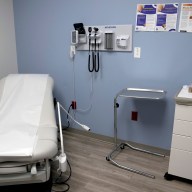 Giving birth at the hospital isn’t the only way to go.
Giving birth at the hospital isn’t the only way to go.
Credit: Getty Images
Study finds home births comparatively safe for low-risk mothers-to-be
Location of study: U.S.
Study subjects: Data study of 16,924 women
Results: The largest study of planned home births ever conducted in the United Statesfound that out of 93.6 percent of the women who began natural (aka spontaneous) vaginal births, only 5.2 percent required a cesarean section for delivery. Researchers said that was because the women in the study were primarily healthy and the pregnancies low-risk. Recently reported in the Journal of Midwifery and Women’s Health, the study noted that rates of intervention, including cesarean section, were significantly lower than those reported in U.S. hospitals without a simultaneous increase in adverse outcomes.
Significance: More American mothers are requesting home births — an increase of about 40 percent in the last nine years — yet home births constitute only 1.2 percent of all deliveries. In comparison, 8 percent of women in Great Britain and 29 percent of women in the Netherlands give birth outside of a hospital obstetric unit. “Given our findings, especially in light of other observational studies published in the last decade, I think it’s time to start shifting the discourse around home birth in this country,” says study lead author Melissa Cheyney, a medical anthropologist at Oregon State University. “We need to start focusing on who might be a good candidate for a home or birth center birth and stop debating whether women should be allowed to choose these options. Home birth is not for every woman and risk factors need to be weighed,” she added. “But the evidence strongly suggests that a healthy woman with an uncomplicated delivery and a single, term baby in a head-down position can safely give birth outside the hospital.”
Testosterone therapy might not boost quality of life and mood in women with primary ovarian insufficiency
Location of study: U.S.
Study subjects: 128 women
Results: Boosting women’s naturally falling testosterone during early menopause before age 40 may not help with physical and mental states, according to a new study published online on Menopause, the journal of The North American Menopause Society (NAMS).
One percent of women experience early menopause, classified as declining ovarian function before age 40, due to a genetic trait called primary ovarian insufficiency (POI). In addition to infertility and other physical problems, women can suffer depression and a decreased quality of life. Boosting estrogen and progesterone levels has been shown to help, but researchers saw no negative or positive effects of boosting testosterone.
The study did not specifically address sexual function.
Significance: “This study makes an important contribution toward understanding what testosterone can and cannot do. With all the hype about testosterone and aging, it is important that the public have the facts,” says NAMS executive director Dr. Margery Gass.
Kids who eat a good breakfast may avoid metabolic syndrome in adulthood
Location of study: Sweden
Study subjects: Students completing year 9 in 1981
Results: Adolescents who ate poor breakfasts had a higher incidence of metabolic syndrome 27 years later, compared with those who ate substantial breakfasts, according to a study conducted by Umeå University and published in Public Health Nutrition. Metabolic syndrome encompasses abdominal obesity, high levels of harmful triglycerides, low levels of protective HDL (High Density Lipoprotein), high blood pressure and high fasting blood glucose levels, all of which can lead to diseases such as heart disease. Researchers found the students who skipped breakfast or ate a poor breakfast had a 68 percent higher incidence of metabolic syndrome as adults, compared with those who had eaten more substantial breakfasts in their youth.
Significance: “Further studies are required for us to be able to understand the mechanisms involved in the connection between poor breakfast and metabolic syndrome, but our results and those of several previous studies suggest that a poor breakfast can have a negative effect on blood sugar regulation,” says Maria Wennberg, the study’s main author.
Indoor tanning is still popular, still a possible major cause of skin cancer
Location of study: U.S.
Study subjects: Data study
Results: In the U.S., Canada, Northern and Western Europe and Australia, the number of skin cancer cases caused by indoor tanning is higher than the number of lung cancer cases due to smoking, says a study published in JAMA Dermatology. Among the regions studied, researchers report 419,254 cases of skin cancer in the U.S. can be attributed to indoor tanning. 6,199 of those are cases of melanoma, the deadliest form of skin cancer. Internationally, 464,170 cases of skin cancer can be attributed to indoor tanning, with 11,374 being melanoma cases. In addition, the study reports more than 35 percent of adults say they have used indoor tanning, with 14 percent admitting to indoor tanning within the past year. Exposure to indoor tanning was highest for university/college students: 55 percent have used tanning beds (43 percent within the past year).
Significance: The Skin Cancer Foundation issued a statement that these findings back up the need for people of all ages, genders and ethnic backgrounds to avoid indoor tanning, and take precautions in the sun, too.
















